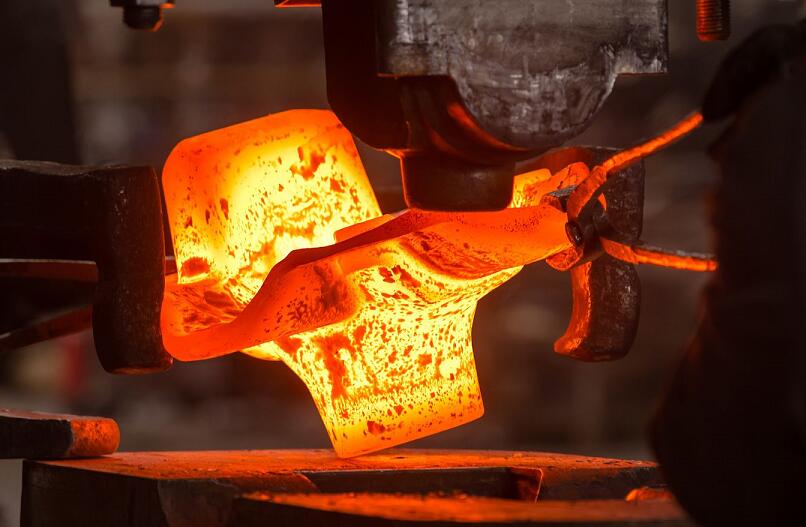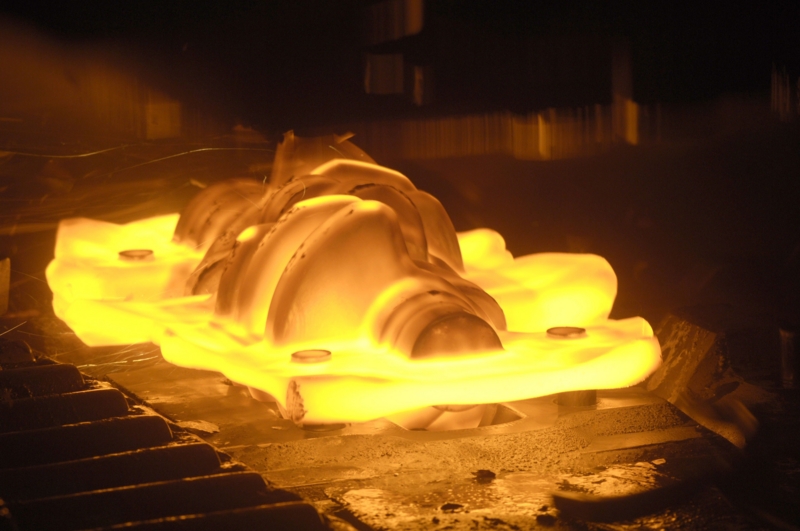Forging Technology of Titanium Alloy

Forging Technology of Titanium Alloy
Titanium alloy has excellent characteristics such as high strength, good corrosion resistance, non-magnetic, good welding performance, and a series of other advantages such as superconductivity, hydrogen storage, and memory. Therefore, titanium alloys are widely used in some cutting-edge fields such as aerospace, military industry, marine development, and petrochemicals. In the application of various titanium alloy products, forgings are mostly used in gas turbine compressor discs and medical artificial bones that require high strength, toughness, and high reliability. Thus, not only high dimensional accuracy is required for forgings, but also materials with excellent characteristics and high stability are required. In this article, we will take a look at the forging technology of titanium alloy.

Forging Technology of Titanium alloy
Before going any further, let's take a look at some applications of titanium alloy forgings.
Applications of Titanium Alloy Forgings
1. Aerospace Field
50% of the world's titanium materials are used in the aerospace field. 30% of the body of military aircraft uses titanium alloy, and the amount of titanium in civil aircraft is gradually increasing. According to reports, the Boeing 787 uses more than 15% of titanium. The titanium alloy used for the body is represented by Ti-6Al-4V alloy, which has the highest safety. In the aerospace field, titanium alloy forgings are used in the fuel tanks of rocket and satellite propulsion engines, the blades of liquid fuel turbopumps, and the inlet section of suction pumps.
2. Turbine Blades for Power Generation
The Forging Technology of Titanium Alloy
In the thermal processing of titanium alloys, the heating temperature is very important. When the temperature is lower, the deformation resistance is greater, and defects such as cracks are prone to occur. At the same time, there is also a great dependence on the deformation speed during the hot working process. During the titanium alloy precision hot die processing, the temperature of the forging die is heated to the equivalent or higher than that of the forging, which can inhibit the temperature drop of the forging during forging.
1. Forging Technology of Engine Disk Parts
Disk parts for aircraft engines require high fatigue strength and fracture toughness, and Ti-6Al-2Sn-4Zr-6Mo alloy plating parts are used in the 700K medium temperature region. The traditional processing method is forging in the α-β zone, and its structure is β phase, equiaxed α grains, and fine needle-like α two-phase structure, and the fracture toughness value is low. To improve this point, a beta forging method with heating in the beta zone was developed.
The β forging method is heating forging above the β phase transition temperature, which will produce recrystallization, so the forging temperature and processing deformation has a great influence on the material properties, and it is not allowed to reheat during forging to stop the deformation.
Therefore, the forging temperature and the amount of deformation must be strictly controlled in β forging. For Ti-6Al-2Sn-4Zr-Mo alloy, the processing temperature is in the range of 1073~1323K, and there must be sufficient processing deformation, the forging structure is all needle-shaped, and the fracture toughness value is improved.
2. Turbine Blade Forging Technology
Turbine blades are very thin, and the temperature drops quickly during the forging process, so the mold must be accurately designed. Currently, a process is being developed to effectively use up and down blow energy to shape the blade surface. Plane forging is performed first, then bend forming, and finally precision forging forming.
3. Ring Manufacturing Technology
Engine fan shells and compressor shells all use Ti-6Al-4V alloy rolling process. For titanium alloy products with relatively high material costs, reducing the amount of material input is very effective in reducing costs. Generally, near-net shape technology is used. With this technology, the amount of material will be reduced by more than 55%. When processing thick rings, to avoid cracks, it is necessary to give pressure as much as possible, and attention should be paid to the control of the structure and the temperature drop of the ring during processing. In short, the production of titanium alloy forgings requires proper processing temperature and proper deformation to obtain high-quality forgings. For this reason, in the manufacturing process of titanium forgings, it is necessary to give full play to the characteristics of titanium alloys. To obtain high-quality forgings, the forging temperature and plastic deformation must be properly controlled during production.
Conclusion
Thank you for reading our article and we hope it can help you have a better understanding of the forging technology of titanium alloy. If you want to know more about titanium and titanium alloy, we would like to advise you to visit Advanced Refractory Metals (ARM) for more information.
Headquartered in Lake Forest, California, USA, Advanced Refractory Metals (ARM) is a leading manufacturer & supplier of refractory metals across the world. It provides customers with high-quality refractory metals & alloys such as titanium, titanium alloys, tungsten, molybdenum, tantalum, rhenium, and zirconium at a very competitive price.
{{item.content}}
LEVE A REPLY
{{item.children[0].content}}
{{item.content}}






